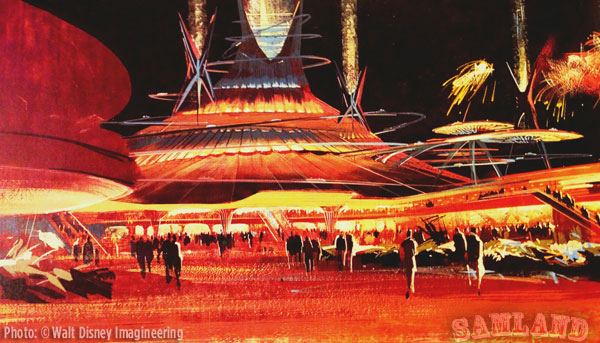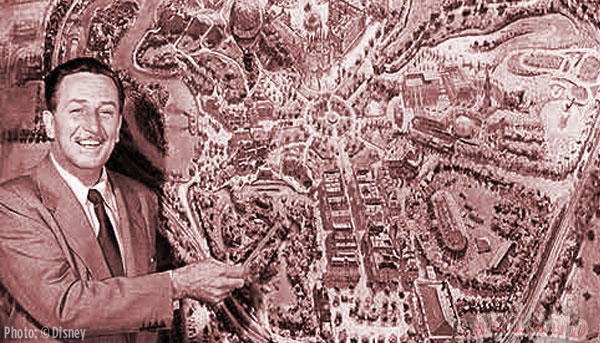Like many entertainment enterprises, sometimes the events taking place backstage are more interesting than what the audience was meant to see. That was certainly the case at Walt Disney Productions. By 1984, long time cracks below the surface started to rise and threatened to tear the company apart.
Historically, the Disney studio was managed by two kingdoms. As the story goes, on one side was Walt Disney, considered the creative genius of the duo. The other team was led by Roy O. Disney, Walt’s older brother and the one who found the money to finance his younger brother’s dreams. Of course, the relationship was far more complex than my brief description and the differences had ripple effects down the management chain. Generally, you were either a Walt or a Roy person. Only a handful could claim allegiance to both.

When Walt passed away in December 1966 his brother Roy dedicated his life to finishing two of his younger brothers most important projects. His priorities became the completion of phase one of the Walt Disney World resort and to help see CalArts become a reality.
When Roy passed away in December 1971, the baton was passed to Donn Tatum and for the first time the company did not have a strong sense of direction. Over the years, filmmaking took a back seat as the Company saw itself more as a theme park operator than a film studio or a real estate heavyweight. By 1983, theme park revenues represented three-fourths of the company’s total revenue and they were flattening out. Walt Disney Productions was in serious trouble.
Serving on the Disney corporate board was Roy E. Disney, Roy’s son. He was not happy with the lack of inertia and he felt the problems stemmed from a lack of leadership. He felt the movie division was at the heart of the company and fed all of the other company activities.

Specifically, Roy E. Disney was not a fan of E. Cardon “Card” Walker, Disney’s CEO from 1976 to 1983. Disney did not like Card Walker and felt that he was a tyrant that did not listen to anybody. It seemed that every decision Walker made followed the question, “What would Walt do?”

Disney was also not fond of Ron W. Miller, who would succeed Walker. Miller was married to Diane Disney, Walt’s oldest daughter. This firmly placed him on that side of the family battles. Walker ignored Roy while spending time grooming Miller for the top job. Disney felt that Miller was okay but he needed someone seasoned to assist him, like Disney board member Raymond Watson.
When it became obvious to Disney that Miller was going to be the next leader, he left the Studio in 1977 to start Shamrock Holdings, a broadcasting and investment company. Roy E. Disney’s partner in Shamrock Holdings was his lawyer Stanley Gold. Gold joined the Disney corporate board. By early 1984, Disney and Gold had enough and felt it was time for a management shakeup.
In February 1984, they went to Frank Wells, vice chairman at Warner Bros. to see if he would be interested in becoming Disney’s next CEO. Wells said yes and suggested they talk with Michael Eisner, president at Paramount Pictures to see if he would join the team.
When Eisner agreed, Roy and Gold resigned from the Disney board on March 9, 1984 so that they would not be privy to information that would compromise their strategy to remove the current management. Gold knew taking such a dramatic move “would hang a For Sale sign over the company.” He said, “You always have to judge whether your opponent is better at managing chaos or you are.” Their actions set off a six-month chain reaction that did not stop until the keys to the kingdom were handed over to a new team.
Struggles within the Disney boardroom made the company ripe for a takeover. At one point takeover specialist Saul Steinberg had acquired twelve percent of the stock until Morgan Stanley and lawyers Skadden Arps Slate Meagher & Flom diluted his shares by issuing more shares.
Another way the Studio protected itself was to make itself more expensive by buying Arvida, a land development company owned by the Bass Brothers. The deal closed on June 6, 1984 for $200 million in stock. Disney also bought Gibson Greeting Cards for $315 million in cash and stock the same day.
It did not matter. Steinberg would not go away. Instead, he brought together a group of investors and offered to buy forty-nine percent of Disney for $325 million. He already had Kirk Kerkorian of MGM lined up to buy Disney’s film production business for $447.5 million. Disney refused and offered him $70.825 per share on June 11 to go away. Roy Disney opposed the pay off and proposed a leveraged buyout of the company and reserving a role for current management. He sued the board to rescind the greenmail payment.
Steinberg was not the only one interested in Disney. Another person kicking the tires was Lew Wasserman. Wasserman was always looking for ways to diversify the business and would occasionally acquire a company that helped to achieve that goal. For example, in 1968 MCA purchased Spencer Gifts, a mail-order gift company based in Atlantic City, New Jersey. He could not help but notice the turmoil in the Walt Disney Productions boardroom.
At the time, Disney was a relatively small entertainment company compared to MCA. Wasserman met with Disney’s top management and it seemed like a deal was very close. The only thing left was deciding who would be president of the new company. The Disney family insisted that Ron Miller get the job. Wasserman preferred his right hand man, Sidney Sheinberg. Sheinberg, realizing that this point could be a deal breaker, declined the job in favor of Miller. However, Wasserman would not be deterred and continued to insist that Sheinberg should get the job. The deal fell apart. Barry Diller learned of the details of this transaction from one of the principals and he said, “Felix [Rohatyn, the investment banker advising MCA] said to Lew, ‘Do it. A year from now you’ll get rid of Miller and make Sid president.'” Wasserman did not take his advice. Diller said of his friend, “It was Lew’s inflexibility that caused him to blow deals he should not have blown. He and Jules [Stein] had built the best company they should have owned the world. And had they made this deal with Disney, everything would have been different.”

Instead of making a deal with MCA, the Disney board decided to pay Steinberg $59 million to go away, allowed Roy Disney and Gold to rejoin the board while removing Card Walker and Donn Tatum. With the addition of Peter H. Dailey, Roy’s brother-in-law, the balance of power shifted toward Roy E. Disney.
Disney and Gold found an ally with investor and Disney corporate board member Sid Bass. Bass was not a fan of Raymond Watson or Ron Miller and was also anxious for change. The three men wanted to hire Frank Wells. Bass Gold said, “I knew it was going to be a natural alliance.”
But it was not over. Investor investor Irwin L. Jacobs starting buying up Disney stock and in mid-July and had become the company’s biggest shareholder. Jacobs opposed the Gibson Greeting Card acquisition and by mid-August that initiative was dead. Not happy with the latest acquisition effort, they took a close look at Ron Miller and decided he should go. On September 7, Ron Miller resigned.
To replace Miller, Roy E. Disney and Stanley Gold fought for Frank Wells and Michael Eisner. At first the board wanted only Eisner. Then board member Philip Hawley of Carter Hawley Hale suggested Dennis Stanfill from 20th Century Fox. The impasse was unexpected. Although Eisner thought he was a shoo-in for the job and told his bosses at Paramount that he was about to leave, things were not so easy. In the end, he had to lobby for the position.
On September 22, the Disney board voted unanimously for Wells and Eisner. Eisner negotiated a six year contract. Gold resigned to make room Sharon Disney Lund, Walt’s youngest daughter, so that both sides of the family could be represented on the board.
One of the first things the politically savvy Eisner did was asked Roy E. Disney what his priorities were. Disney suggested he wanted to focus on bringing back the heart if the company; feature animation. Eisner was relieved and decided he would focus on his strengths, ramping up live movie and television production.
There was only one problem. Eisner quickly realized forty-four acre Walt Disney Productions studio in Burbank was too small and originally designed to produce animated films. He needed more studio space.

Within days of starting at Disney, Eisner and Wells met with Sid Bass and investor Richard Rainwater to discuss options to monetize the Florida property. They discussed how a third theme park might keep guests on property longer. Wells said, “The idea was to encourage them to increase their length of stay. It was two to two and a half days and we wanted to get it up to three or four days.” All eyes started to turn toward Florida.
The rest, as they say, is Disney History.
![]()
Of course, you won’t want to miss Sam’s two blockbuster books. They perfect Christmas presents!


You must be logged in to post a comment.